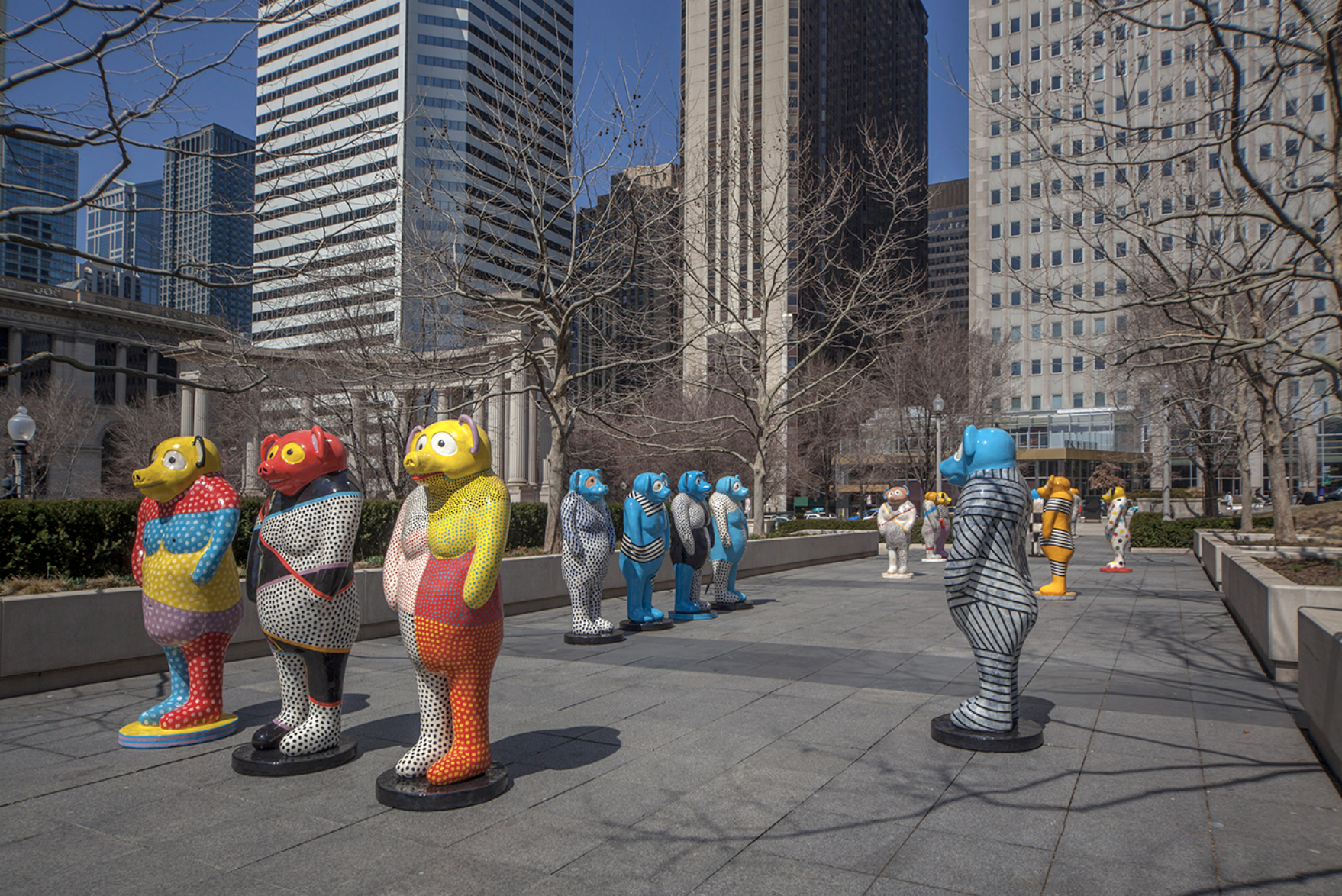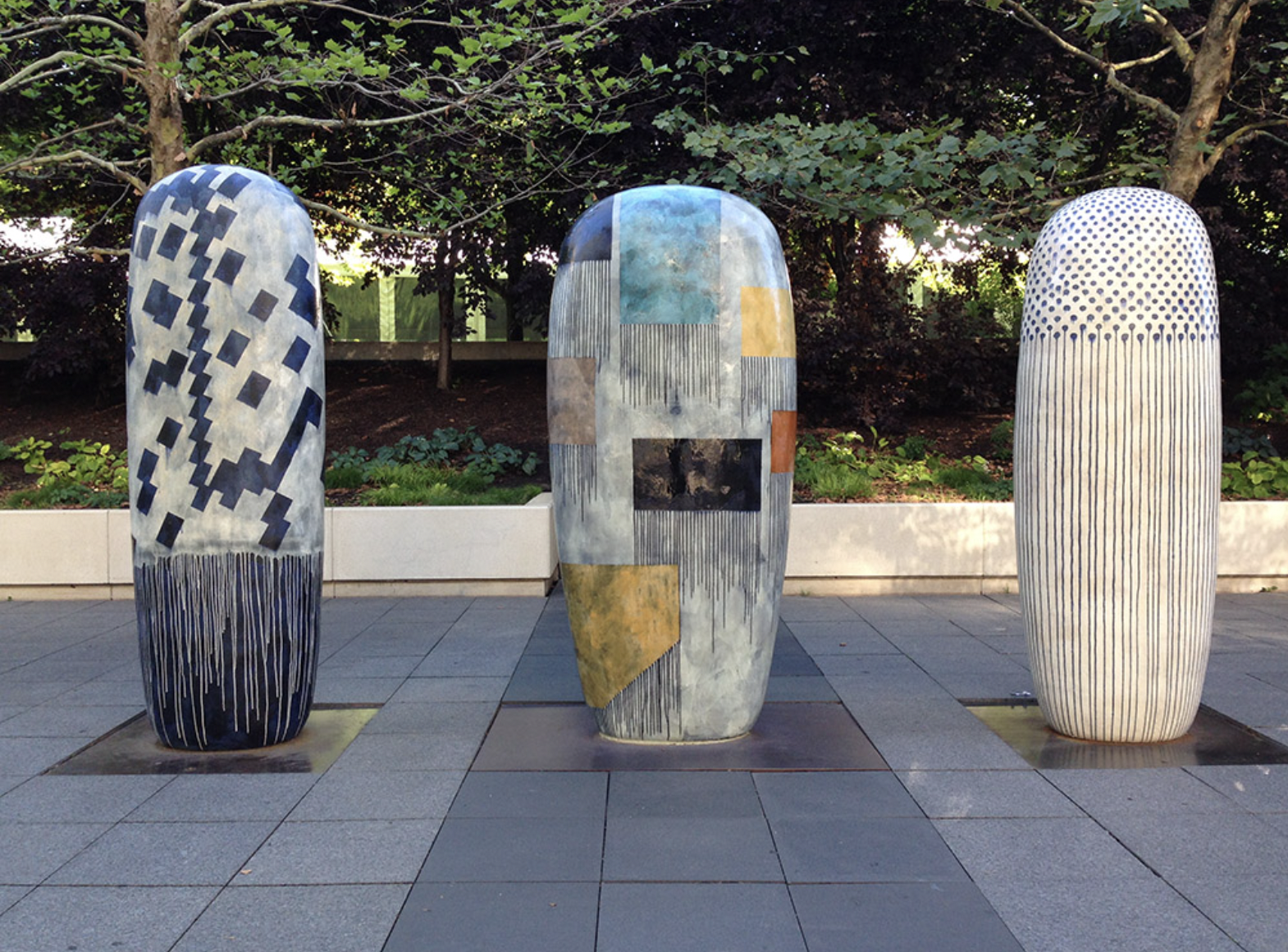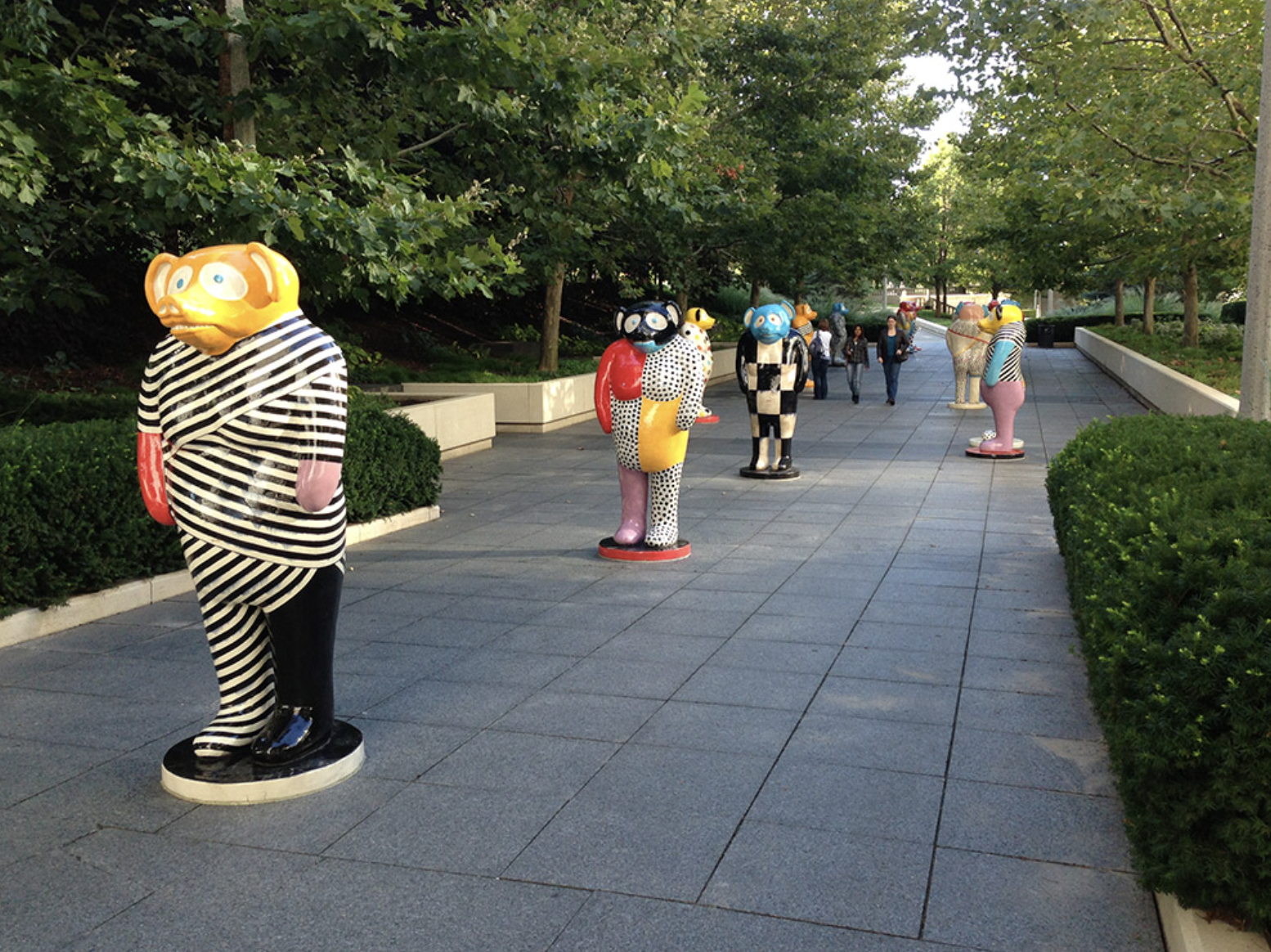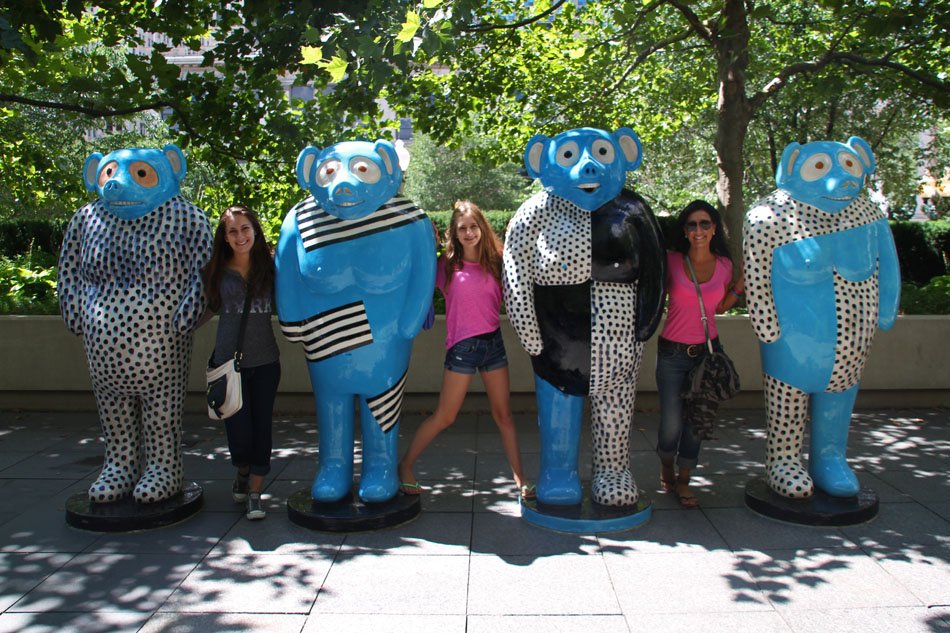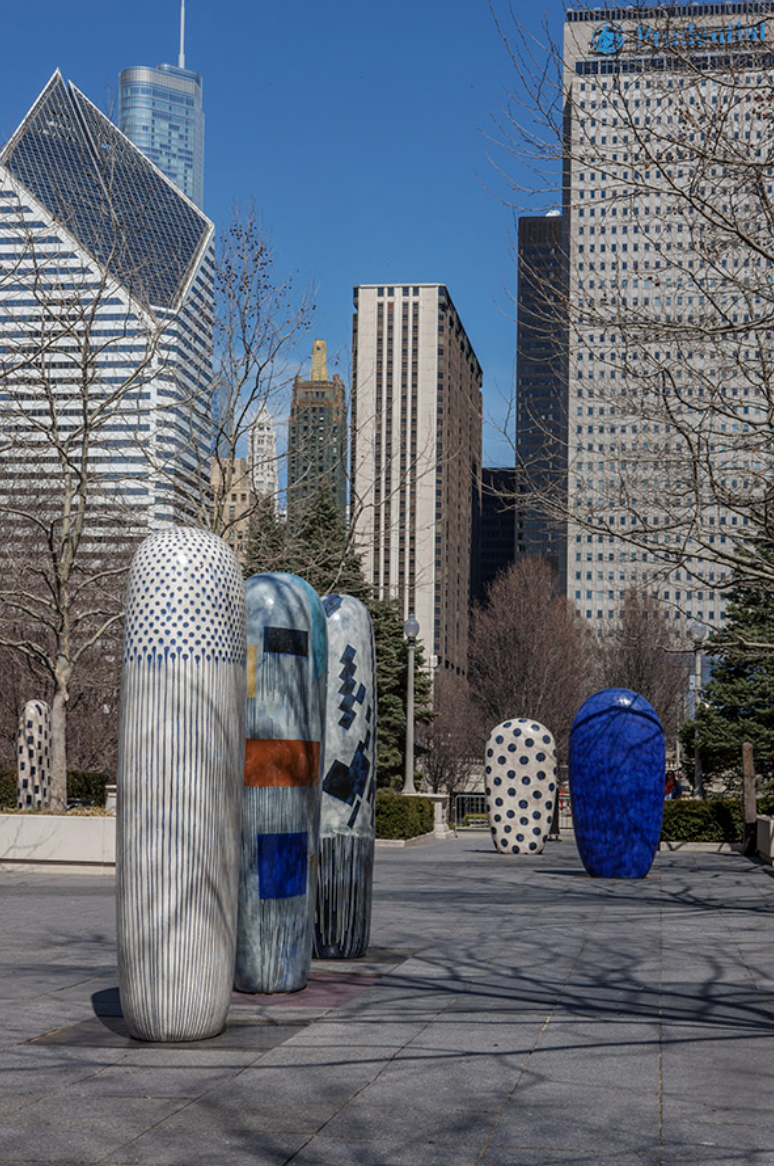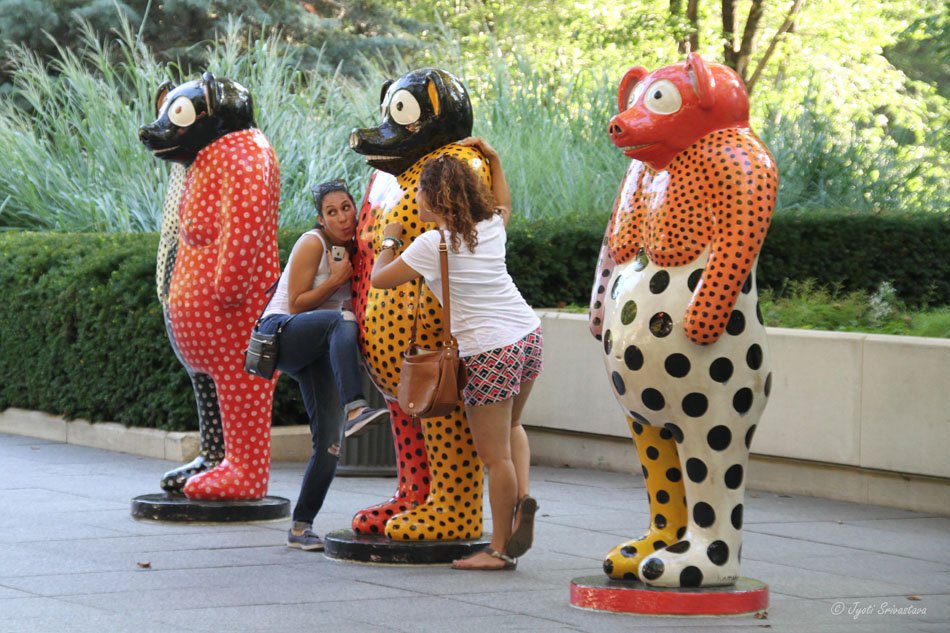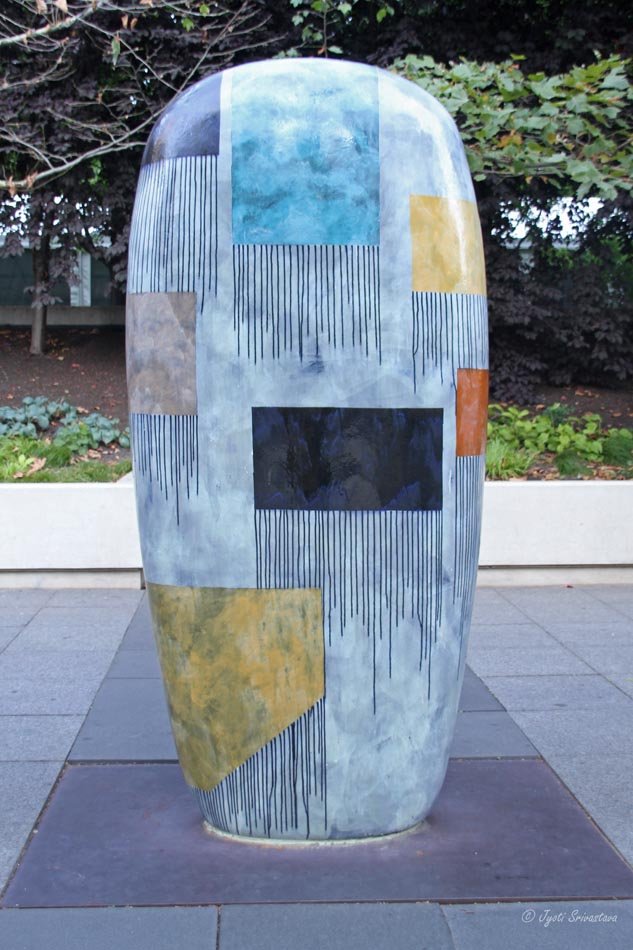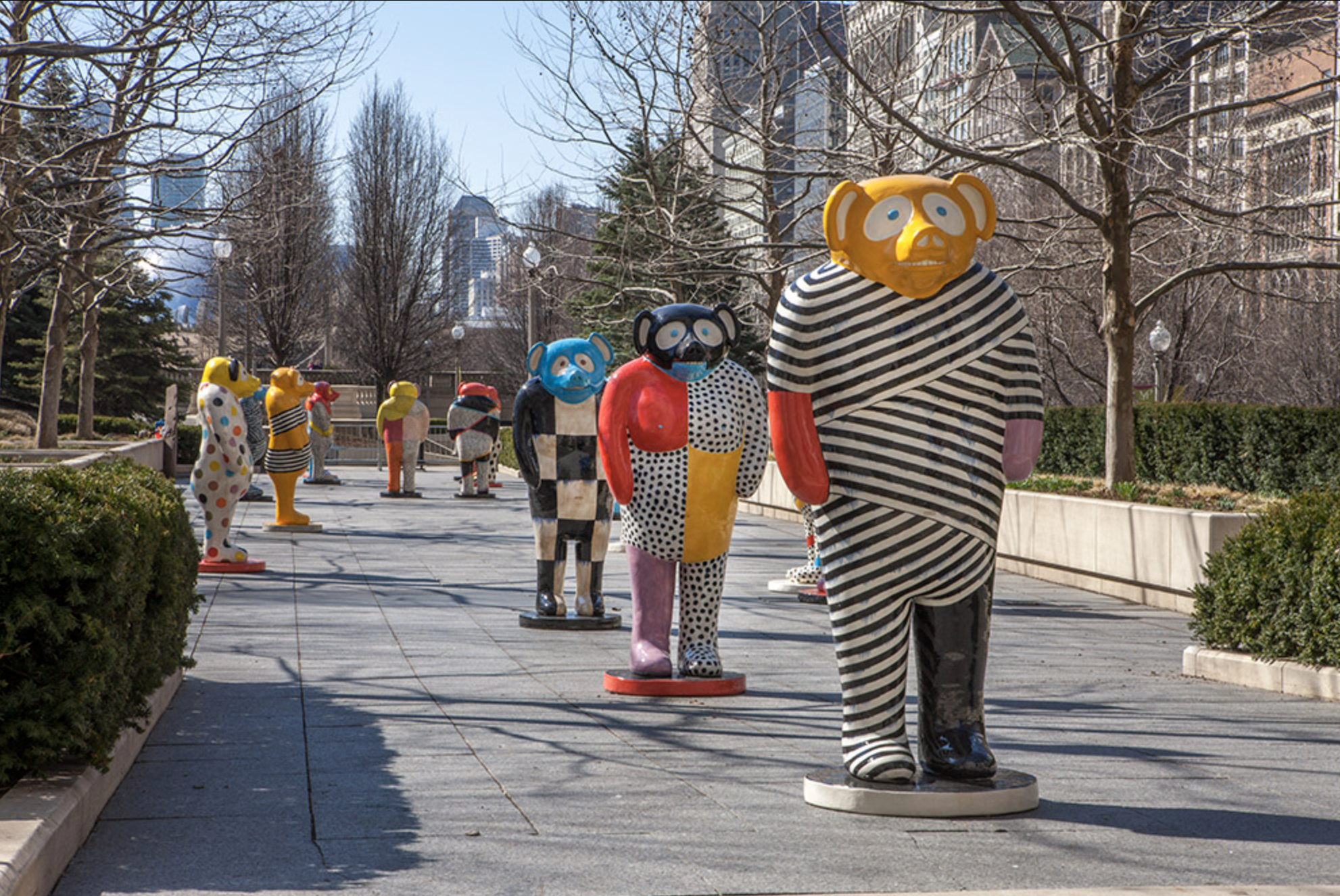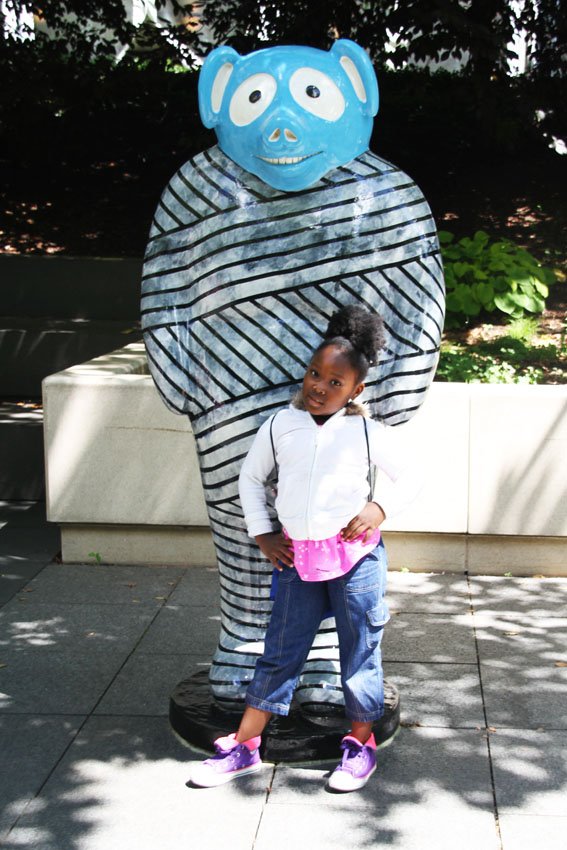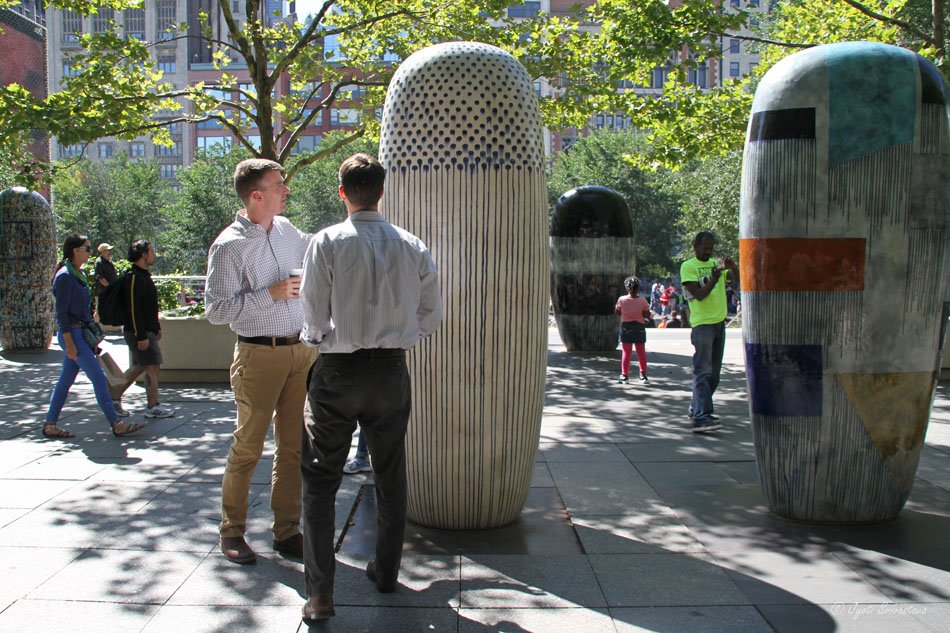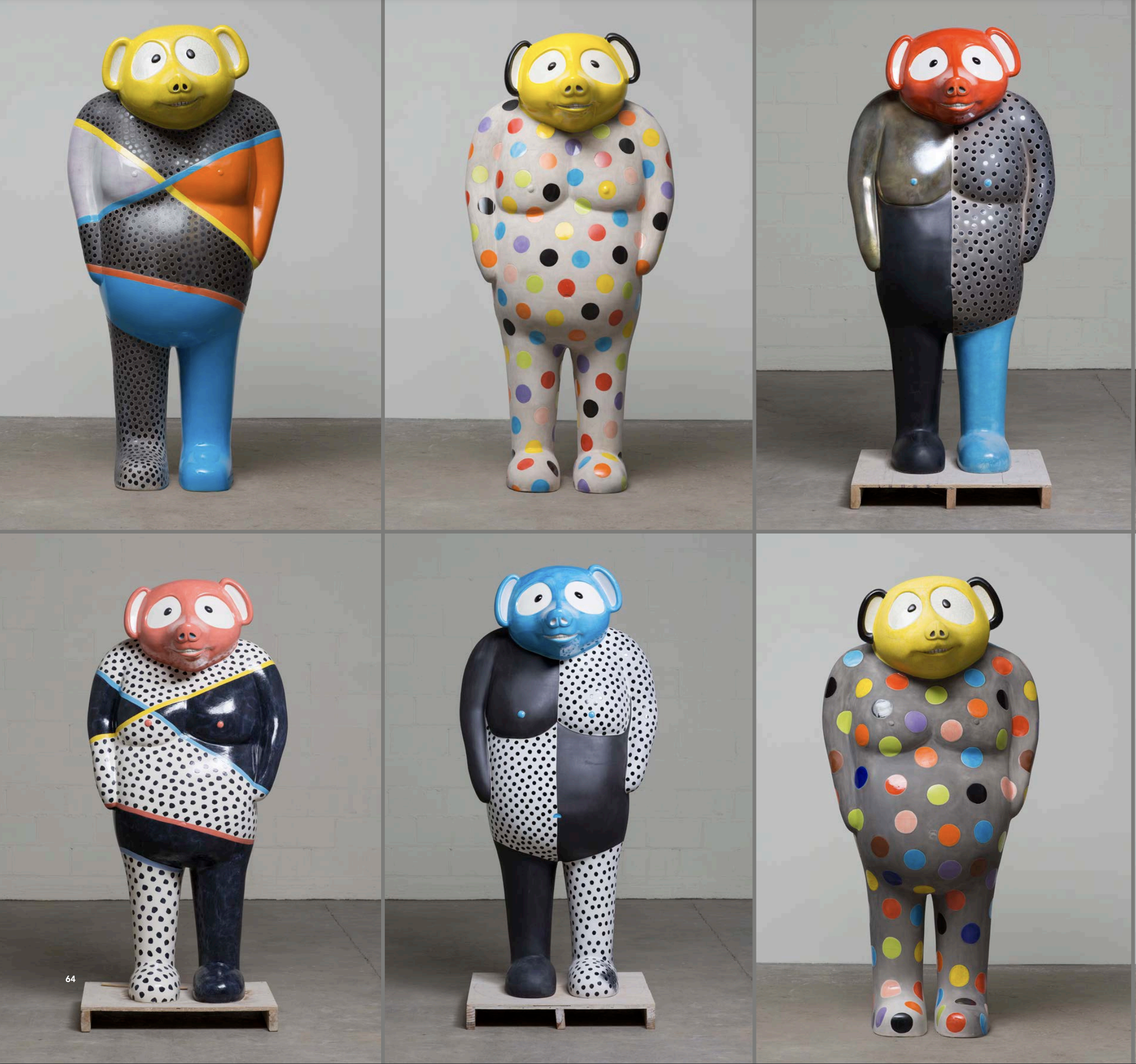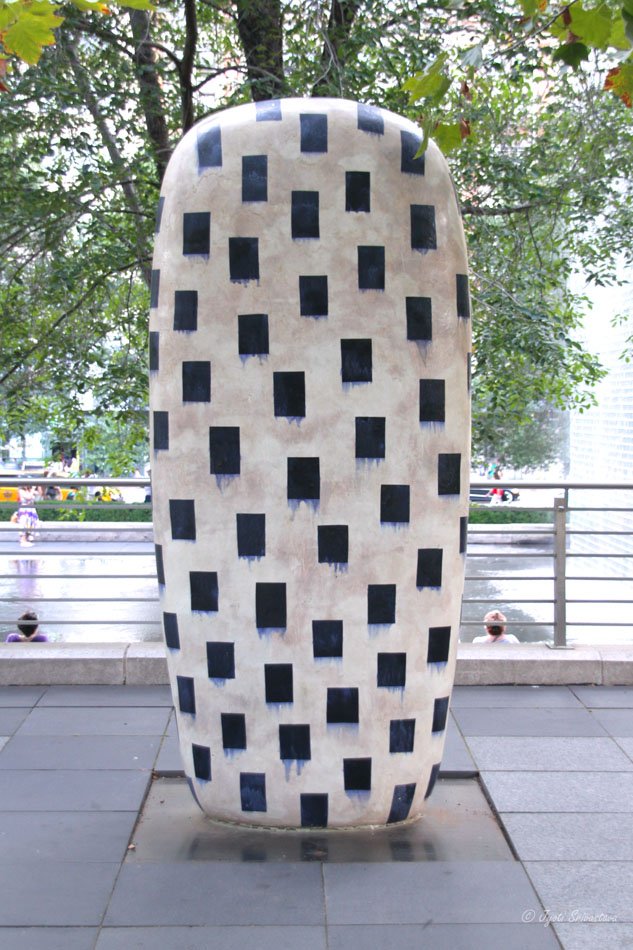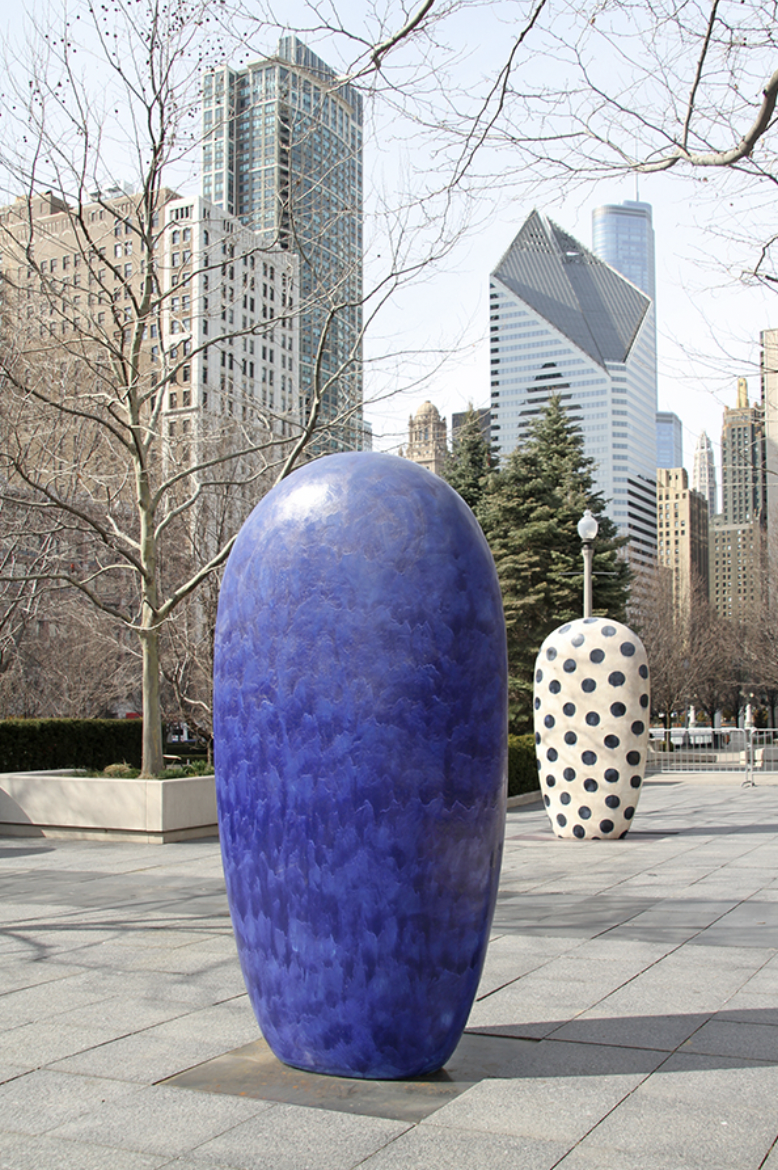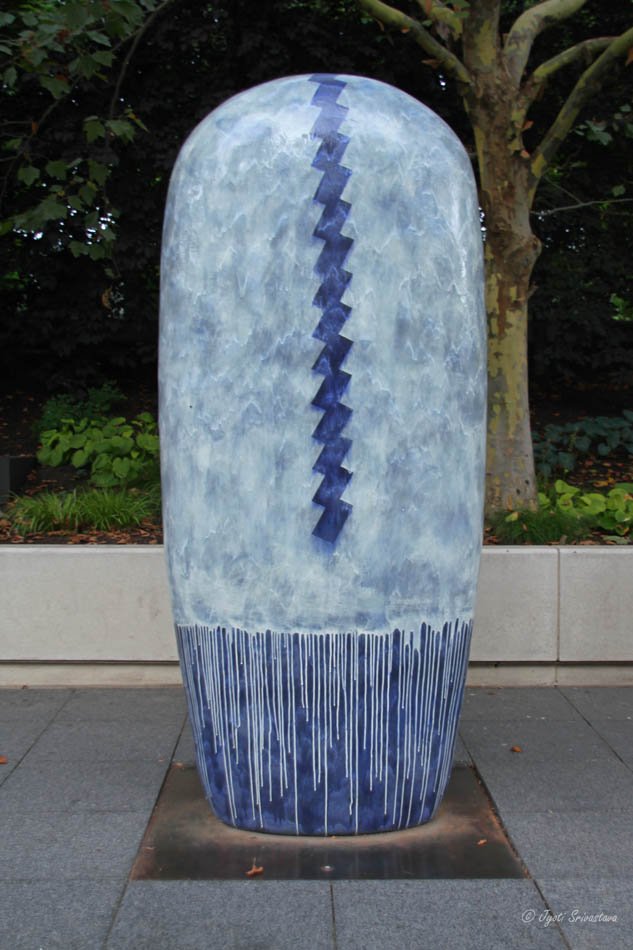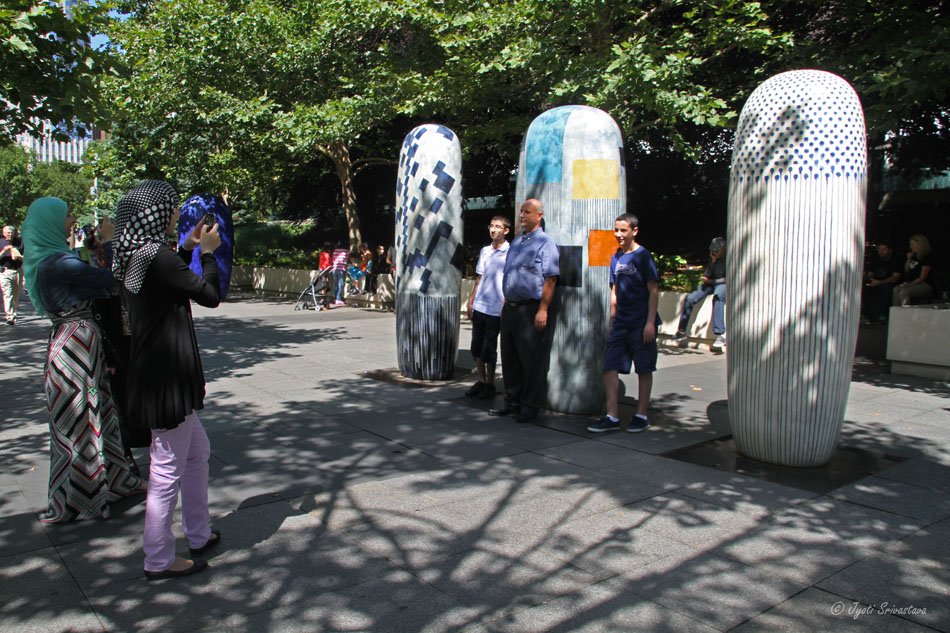Legends, Myths and Truths: Jun Kaneko
Photo: Jyoti Srivastava
As a pioneer in the field of monumental ceramic sculpture, Jun Kaneko has played with scale and proportion. The installation created for Millennium Park’s Boeing Galleries represented both his past and present artistic practices. The exhibit featured Kaneko’s signature Dangos (meaning “rounded form” or “dumpling” in Japanese). These ceramic steles, covered in a variety of vibrant shapes and patterns, allowed viewers to examine their environment and focus on a sense of scale and place.
The exhibit also featured a new body of work by Kaneko, drawing upon the myths and legends of the Tanuki figure. From ancient times, the Japanese have expressed the Tanuki in a variety of ways, for it is considered to be a trickster who causes trouble and mayhem in both the human and supernatural worlds. In our modern era, however, the figure is most commonly portrayed as a large, stout badger. The Tanuki is not only a creature found in mythology, but a small, nocturnal mammal native to East Asia.
Hybrid extensions of the artist’s Eastern and Western identities, Kaneko’s works balance elements of both American and Japanese aesthetics. His figures, as well as the meditative and reflective qualities of his pieces, are rooted in Japanese culture and mythology, but the monumental, public scale of his work descends from the American modern tradition. The works resulting from this transcultural heritage create a unique artistic statement which functions as a universal language for all viewing audiences.
Artist Bio
Jun Kaneko was born in Nagoya, Japan, in 1942. He studied painting with Satoshi Ogawa during his adolescence. In 1963, he came to the United States to continue his studies at Chouinard Art Institute when his introduction to Fred Marer drew him to sculptural ceramics.
Based in Omaha since 1986, Jun Kaneko has worked at several experimental studios, including European Ceramic Work Center in The Netherlands, Otsuka Ohmi Ceramic Company in Japan; Fabric Workshop in Philadelphia, PA; Bullseye Glass in Portland, OR; Acadia Summer Arts Program in Bar Harbor, ME; Derix Glasstudios in Taunusstein, Germany, and Aguacate in Puerto Vallarta, Mexico. Over the course of his career he has partnered with industrial facilities to realize large-scale, hand-built sculptures. Most recently, Jun has been working at Trate Arte ceramics studio in Cuernavaca, experimenting with new glazes and unprecedented scale with the unpredictable raku process.
Kaneko is increasingly drawn to installations that promote civic interaction, realizing over seventy public art commissions from 1985 to present. Many are large-scale permanent installations that can be seen across the United States and internationally in Toronto, Canada, Shanghai, China, Jakarta, Indonesia, and multiple cities in Japan. His artwork appears in numerous international and national solo and group exhibitions annually and is included in more than eighty museum collections.
Jun Kaneko has designed three opera productions; Puccini’s Madame Butterfly (2006), Beethoven’s Fidelio (2008), and Mozart’s The Magic Flute (2012) which have toured throughout the United States.
